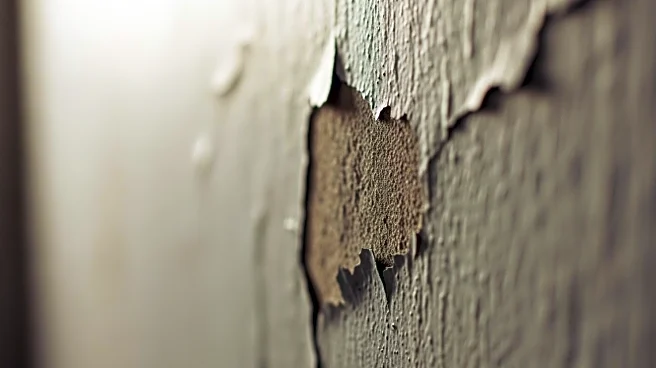What's Happening?
Shalimar Paints has reported a net loss of ₹14.14 crore for Q2 FY26, marking a 27.93% year-on-year decline. The company's revenue for the quarter was ₹133.81 crore, a decrease of 7.55% compared to the previous year. Operating margins remain negative at -4.68%,
indicating ongoing operational challenges. Despite a 123-year history, Shalimar Paints is struggling with persistent losses, negative cash flows, and rising interest costs. The company's market position is eroding in a competitive industry dominated by well-capitalized peers.
Why It's Important?
The financial difficulties faced by Shalimar Paints highlight significant challenges within the paints industry, particularly for smaller players. The company's inability to generate positive cash flows and its rising debt burden raise concerns about its long-term sustainability. This situation underscores the competitive pressures in the industry, where larger companies with strong brand equity and distribution networks are better positioned to thrive. The ongoing losses and negative cash generation could lead to liquidity issues, affecting stakeholders such as employees, suppliers, and investors.
What's Next?
Shalimar Paints may need to consider strategic partnerships or capital infusions to stabilize its operations. The company must address its structural weaknesses and improve its operational efficiency to compete effectively. Monitoring further deterioration in quarterly losses and cash flow will be crucial. Any additional promoter share pledging or inability to service debt obligations could exacerbate the company's financial stress. Stakeholders will be watching for any signs of turnaround or further decline in market share.
Beyond the Headlines
The challenges faced by Shalimar Paints reflect broader industry trends, including consolidation and competitive pressures. The company's high level of promoter share pledging raises governance concerns, potentially affecting investor confidence. The lack of institutional support highlights the perceived risk associated with the company's financial health. As the industry continues to evolve, Shalimar Paints must adapt to remain viable, potentially requiring a fundamental transformation of its business model.













